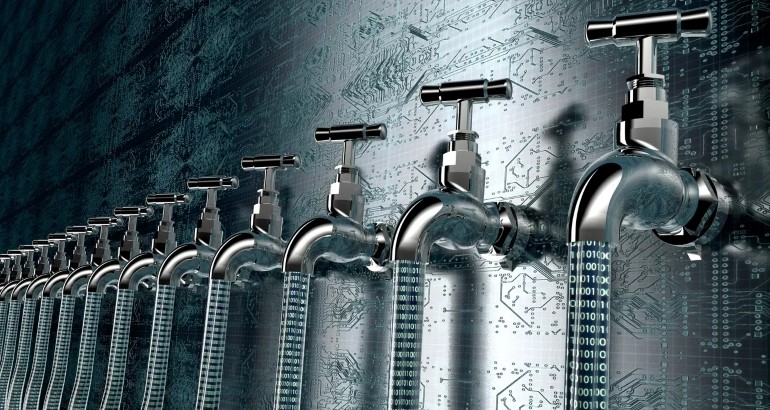Data Leakage: Is Your Data Secure?

- Privacy
- Online threats





Overview
Data leakage is a serious cybersecurity issue that can impact the privacy, property, and reputation of individuals and businesses. Data leakage refers to the unauthorized theft or removal of data, often done by hackers or insiders. This article will provide an overview of data leakage, including its definition, methods, techniques, consequences, detection methods, and prevention tips, to help you understand how to protect your data security.
Contents
Techniques Used in Data Leakage
Methods for Detecting Data Leakage
Secrets to Prevent Data Leakage
What is Data Leakage?
Data leakage refers to the unauthorized theft or removal of data, often done by hackers or insiders. Hackers gain access to personal or corporate computers or mobile devices to steal data, which is then used for ransom, extortion, or reputation damage. Insiders refer to individuals within an organization who transfer sensitive information to their personal storage devices or leak it to hackers.
Methods of Data Leakage
Data leakage can occur through external attacks or internal threats. External attacks involve hackers infiltrating enterprise networks and injecting malicious software to send data to external servers. Internal threats involve individuals within an organization transferring sensitive information to their personal storage devices or leaking it to hackers.
Techniques Used in Data Leakage
Hackers use various techniques to steal sensitive information, such as:
① Social Engineering
Exploiting human vulnerabilities to trick targeted users into providing passwords, verification codes, and other information.
② Phishing
Sending forged emails, websites, or messages to deceive targeted users into clicking malicious links or attachments.
③ Piggybacking
Utilizing public Wi-Fi networks to intercept targeted users' network traffic or implant malware.
④ Ransomware
Encrypting targeted users' files or systems and demanding ransom payment to unlock them.
⑤ Dumpster Diving
Extracting sensitive information from discarded files, hard drives, or devices of targeted users.
⑥ Shoulder Surfing
Sneakily observing targeted users' screens, keyboards, or files when they are not paying attention.
⑦ Impersonation
Posing as legitimate organizations, institutions, or individuals to request sensitive information from targeted users.
⑧ Honeypots
Setting up fake network resources to attract targeted users' visits and record their behaviors and information.
⑨ Baiting
Placing malicious software-loaded items, such as USB drives or CDs, in places where targeted users may find them.
Consequences of Data Leakage
Data leakage can have severe impacts on organizations, including:
① Reputational Damage
Data leakage can harm an organization's reputation and trust, leading to diminished confidence from customers, partners, and investors.
② Financial Loss
Data leakage can result in direct and indirect economic losses, including ransom payments, legal compensations, fines, remediation costs, and revenue decrease.
③ Legal Issues
Data leakage can violate relevant laws and regulations, such as the Cybersecurity Law and Personal Information Protection Law, exposing organizations to legal actions and administrative penalties.
④ Compliance Risks
Data leakage can affect an organization's compliance with standards like ISO 27001 and PCI DSS, causing them to lose certifications or qualifications.
Methods for Detecting Data Leakage
Detecting data leakage can be challenging as hackers employ advanced camouflage techniques. Organizations need to implement tools capable of real-time monitoring for malicious activities, such as:
① Intrusion Detection Systems (IDS)
Detecting abnormal traffic or behavior in the network and issuing alerts.
② Malware Analysis Tools
Analyzing characteristics, behaviors, and sources of malicious software, and providing solutions.
③ Data Loss Prevention (DLP) tools
Identifying and protecting sensitive data, preventing or controlling data exfiltration or movement.
④ Security Information and Event Management (SIEM) tools
Collecting and analyzing logs, events, and alerts in the network, and providing visual reports and dashboards.
Secrets to Prevent Data Leakage
Preventing data leakage requires effort, but not doing so can be extremely risky. Organizations should take the following measures to reduce the risk of data leakage:
① Conduct Data Risk Assessment
Understand what sensitive data you possess, where it is stored, who can access it, and the threats it might face.
② Invest in Cybersecurity Tools
Use IDS, malware analysis tools, DLP tools, SIEM tools, and others mentioned above to bolster network security.
③ Train Employees
Improve employees' awareness and skills in cybersecurity, educate them on how to identify and avoid common attack tactics, such as social engineering and phishing.
④ Regularly Back Up Data
Back up important data to secure locations, such as cloud or offline storage devices, to prevent data loss or damage.
⑤ Manage Network Access
Restrict employees' access to sensitive data, granting necessary permissions only, and regularly audit and update permission settings.
⑥ Use MetroVPN
MetroVPN is an excellent VPN service that helps encrypt your network traffic, hide your real IP address, preventing hackers or third parties from monitoring or stealing your data. MetroVPN can also help you unlock various websites and applications, allowing you to enjoy a freer, more secure, and faster online experience.






